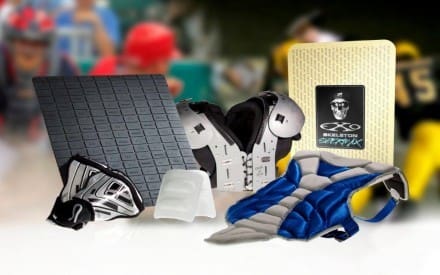DuPont Protection Technologies is pleased to announce the winners of the DuPont Kevlar Innovation Awards, which showcase ideas, methods, technologies, applications, products and services using DuPont Kevlar in a new way. This year’s U.S. awards were bestowed in three categories: innovation, protection and collaboration to QinetiQ North America, TYR Tactical and UNEQUAL Technologies, respectively.
They’re excited to announce the winners of these awards that recognize not only incredible ingenuity in uses for DuPont Kevlar, but our partners commitment to industry collaboration to help make the world a better, safer place, said William F. Weber, vice president of DuPont Protection Technologies, North America. DuPont Kevlar is most commonly known for ballistic protection, but its light-weight strength is used for a myriad of other purposes; these award winners showcase some of the best of the wide range of innovative uses of DuPont Kevlar in the industry.
Innovation award criteria focused on the use of DuPont Kevlar with new materials and/or new processing technologies, creativity in the use of DuPont Kevlar in new applications and general uniqueness or impressiveness of the product. The protection award was based on the best demonstration of an innovation that enhances protection of people, processes or the environment using DuPont Kevlar. The collaboration award was given to the entry that best demonstrated ways in which the company worked with DuPont or other organizations to develop a product using Kevlar that provides commercial significance and benefit to others.
QinetiQ North America’s rocket propelled grenade (RPG) protection solution, Q-Net, is the winner in the innovation category. Q-Net provides superior RPG defeat capabilities, is adaptable to a variety of platforms, and is low-cost and ultra-lightweight. QinetiQ worked in conjunction with the Defense Advanced Research Projects Agency (DARPA) and the Office of Naval Research (ONR) to develop the Q-Net system, which is based on nets rather than traditional armor. The system leverages DuPont Kevlar in the netting in combination with metal points at net junctions to create the configuration. DuPont Kevlar was chosen for the netting for its strength, weight and low stretch characteristics. The resulting system offers an innovative solution to vehicle light-weighting and performance challenges, as reducing weight decreases the overall wear and tear of vehicle operating systems and fuel consumption.
QinetiQ North America Q-Net
TYR Tactical is honored with the protection award for its PV Nylon, a hybrid laminate that is significantly stronger and lighter-weight than standard nylon. TYR Tactical’s PV Nylon demonstrates how scientific innovation can yield incredible hybrid materials that address market challenges. By incorporating DuPont Kevlar to provide increased strength and ballistic resistance at a lighter-weight, TYR Tactical decreased the amount of nylon needed in a protection system, in turn reducing the weight of protection systems overall and increasing the life cycle of each product. This provides the market with a much needed solution for longer-wearing, more resistant and lighter-weight armor.
TYR Tactical PV
The collaboration award goes to UNEQUAL Technologies for its EXO pads, which offer body protection to soldiers and athletes. UNEQUAL worked with DuPont to incorporate DuPont Kevlar into its layered pad systems, yielding the first multi-threat, all-fabric solution that reduced fabric thickness, weight and cost. Collaboration with the sports industry allowed UNEQUAL to create padding that protects against blunt force trauma significantly better than traditional foam pads. UNEQUAL relied on Villanova University, Drexel University, Southern Impact Research Center and Safariland/BAE Systems, as well as other industry and academic partners to conduct extensive testing of its EXO Skeleton technology. EXO pads are now used by multiple NFL and NHL teams to help protect players. The different systems are light-weight, thin, and flexible to increase comfort without sacrificing protection on the sports field or battlefield.
UNEQUAL Technologies

The DuPont Kevlar Innovation Awards were judged by a prestigious panel of experts: Professor Philip Brown of Clemson University; Police Commissioner Charles Ramsey; Eric Lin, Ph.D., Chief of the Polymers division at National Institute of Standards and Technology; Adam Rogers, senior editor at Wired; and Doug Muzyka, Chief Science & Technology Officer at DuPont. Each award winner received $10,000 to donate to a charitable organization that benefits education, science, technology and/or government service. QinetiQ donated its award to the Wounded Warrior Project, which provides programs and services to severely injured service members as they recover and transition back to civilian life. TYR Tactical donated its award to Fisher House Foundation, which provides free or low cost lodging to veterans and military families receiving treatment at military medical centers. UNEQUAL donated its award to the National Law Enforcement Museum, which will tell the story of American law enforcement through exhibits, collections, research and education and is expected to open in 2014.
This contest is particularly timely, as DuPont recently opened its new Cooper River plant near Charleston, S.C. the single largest investment in the fiber since its invention. Overall global production capacity for DuPont Kevlar will increase initially by 25 percent and is expected to grow by 40 percent, creating the supply essential to further DuPont Kevlar innovation and new applications by both DuPont and its partners.
















































































































